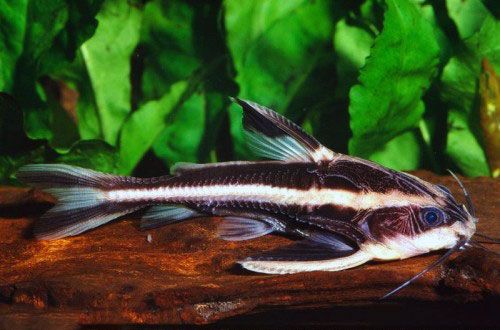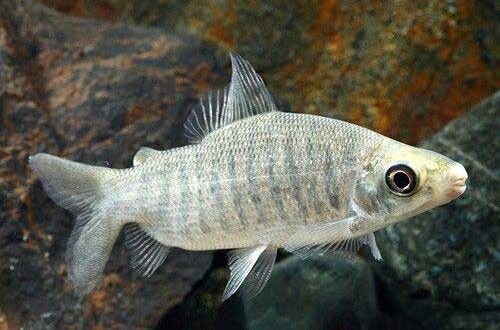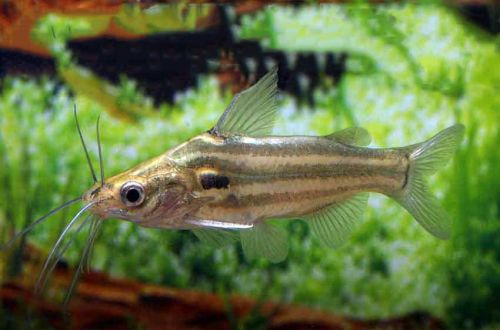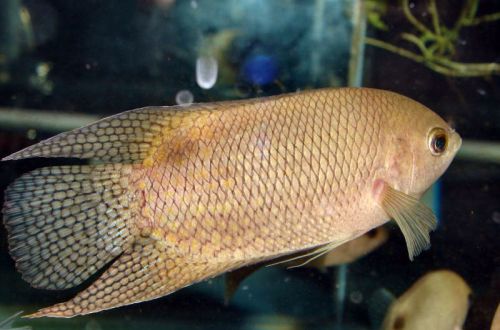
Platidoras
Platydoras, scientific name Platydoras armatulus, belongs to the Doradidae family. Differs in unpretentiousness and endurance, in an aquarium it can act as a cleaner, picking up leftover food for the rest of the fish. It goes well with most calm species, not only due to its peaceful disposition, but also the ability to adapt to various water conditions.

Contents
Habitat
The natural habitat extends almost throughout the tropical part of South America. The catfish is found in rivers and their tributaries, swamps and lakes, preferring regions with calm waters and numerous shelters in the form of snags and flooded coastal vegetation.
Brief information:
- The volume of the aquarium – from 120 liters.
- Temperature – 24-30°C
- Value pH — 5.8–7.5
- Water hardness – soft to hard (2-20 dGH)
- Substrate type – any
- Lighting – preferably subdued
- Brackish water – no
- Water movement – light or moderate
- The size of the fish is about 15 cm.
- Meals – any
- Temperament – peaceful
- Content alone or in a group
Description
Adults reach a length of up to 24 cm, but in limited aquarium conditions they usually grow to 15. The color is dark with a white stripe along the body on which pointed bone plates are located. The pectoral and dorsal fins have a massive first ray with sharp but small spines. Sexual dimorphism is weakly expressed, it is problematic to distinguish a male from a female.
Food
It accepts all types of dry, frozen or live food, the main condition is that they must be sinking, since Platidoras feeds exclusively at the bottom. If there are other fish species in the aquarium, it is advisable to feed the feed in the evening by the time the lights are turned off for the night.
Maintenance and care, arrangement of the aquarium
The optimal size of the tank for one or two fish starts from 120 liters. In the design, the main attention is paid to shelters, which can be both decorative objects (natural or artificial snags, roots, branches), as well as ordinary ceramic pots turned on their side, or hollow tubes of a suitable diameter. Other decorative elements at the discretion of the aquarist. There are no requirements for plants, except that species floating on the surface can serve as an additional source of shading for the aquarium, which will allow you to see catfish much more often getting out of their shelter. To observe him in the evening and at night, you can build special lamps for night illumination into the lighting system.
Water conditions have a wide range of acceptable values, therefore it is not required to maintain certain pH and dGH parameters, the main thing is not to allow the deterioration of water quality, and for this it is necessary to regularly clean the soil from organic waste and replace part of the water weekly (10–15% of the volume) with fresh.
Behavior and Compatibility
A non-aggressive calm fish, however, represents a real danger to very small species that can become its dinner. But it is compatible with most other species of similar size and temperament. Able to live both alone and in a group, intraspecific conflicts were not noticed.
Breeding / breeding
Successful breeding experiments in home aquaria are quite rare and reliable information could not be found at the time of writing. Platidoras are mainly sourced from commercial fish farms and are much less commonly caught from the wild.
Fish diseases
The main cause of most diseases is unsuitable living conditions and poor-quality food. If the first symptoms are detected, you should check the water parameters and the presence of high concentrations of hazardous substances (ammonia, nitrites, nitrates, etc.), if necessary, bring the indicators back to normal and only then proceed with treatment. Read more about symptoms and treatments in the Aquarium Fish Diseases section.





